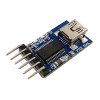Hi guys, I was advised by @dknguyen to use segger IDE to program an ARM processor. But I have no clue what exactly to do. @dknguyen this post isn't mean to insult or put you down you or anything, thanks a lot for the help in the previous posts, but I have just got into this hobby and dont know a thing. I didn't exactly understand what you were saying. dknguyen hope you didn't take me offensively.
So, my main aim is to program a STM ARM microontroller, run a motor/LCD display attach sensors basically make a robot. I currently have a STM Link V2 as the programmer, a MacBook Pro (I might get a windows system) and dont know what programming software do I use to program a STM processor. I want the application to be free, easy for me to understand and use and a bunch of youtube tutorials on how to use this software. Please explain me by being very simple, I have just come into electronics please make it really simple for me.
Thank you.
So, my main aim is to program a STM ARM microontroller, run a motor/LCD display attach sensors basically make a robot. I currently have a STM Link V2 as the programmer, a MacBook Pro (I might get a windows system) and dont know what programming software do I use to program a STM processor. I want the application to be free, easy for me to understand and use and a bunch of youtube tutorials on how to use this software. Please explain me by being very simple, I have just come into electronics please make it really simple for me.
Thank you.


